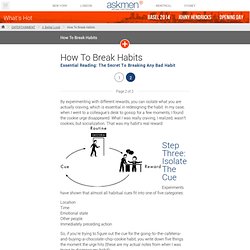

Handwriting a great give away. Personality theories. Assessment | Biopsychology | Comparative | Cognitive | Developmental | Language | Individual differences | Personality | Philosophy | Social |Methods | Statistics | Clinical | Educational | Industrial | Professional items | World psychology | Personality:Self concept · Personality testing · Theories · Mind-body problem Personality theories Edit There are several theoretical perspectives on personality in psychology, which involve different ideas about the relationship between personality and other psychological constructs, as well as different theories about the way personality develops.

Critics of personality theory claim that personality is "plastic" across time, places, moods, and situations. Trait theories Edit According to the Diagnostic and Statistical Manual of the American Psychiatric Association, personality traits are "enduring patterns of perceiving, relating to, and thinking about the environment and oneself that are exhibited in a wide range of social and personal contexts. " How To Break Habits. Page 2 of 2 By experimenting with different rewards, you can isolate what you are actually craving, which is essential in redesigning the habit.

In my case, when I went to a colleague's desk to gossip for a few moments, I found the cookie urge disappeared. What I was really craving, I realized, wasn't cookies, but socialization. That was my habit's real reward: Step Three: Isolate The Cue Experiments have shown that almost all habitual cues fit into one of five categories: LocationTimeEmotional stateOther peopleImmediately preceding action So, if you’re trying to figure out the cue for the going-to-the-cafeteria-and-buying-a-chocolate-chip-cookie habit, you write down five things the moment the urge hits (these are my actual notes from when I was trying to diagnose my habit): Where are you?
After just a few days, it was pretty clear which cue was triggering my cookie habit — I felt an urge to get a snack at a certain time of day. Step Four: Have A Plan. Pamela Meyer: How to spot a liar. What Do You Look for in Relationships? The Logic of Emotion. StumbleUpon. The Change Cycle™ Model Change has always been a necessary aspect of life and work, and our world is changing more rapidly than ever.

It is likely that you will have to cope with a variety of changes in the near future. Your success and fulfillment - your emotional, mental, spiritual and physical well-being - depend on how well you adapt to change. People react, respond and adjust to change in a sequence of six predictable stages. The Change Cycle model identifies the thoughts, feelings and behaviors associated with each stage of change. Stage 1 – Loss to Safety In Stage 1 you admit to yourself that regardless of whether or not you perceive the change to be good or 'bad" there will be a sense of loss of what "was. " Stage 2 – Doubt to Reality In this stage, you doubt the facts, doubt your doubts and struggle to find information about the change that you believe is valid. Stage 3 – Discomfort to Motivation You will recognize Stage 3 by the discomfort it brings.
How to Express Difficult Feelings - StumbleUpon. Feelings Versus Thoughts and Beliefs Feelings and thoughts are different, but also are one and the same.

They are like the head and tail of a coin. We react to events with both thoughts and feelings. Feelings are emotions, and sensations, and they are different from thoughts, beliefs, interpretations, and convictions. When difficult feelings are expressed, the sharp edges are dulled, and it is easier to release or let go of the bad feeling. Guidelines For Expressing Feelings Techniques for Expressing Feelings The two following - I feel statements and I messages will help you: When you first start using these techniques they will be cumbersome and awkward to apply, and not very useful if you only know them as techniques. Which of the two methods you use for expressing your feelings should depend on your goal, the importance or difficulty of your feelings and the situation.
I Feel Statements These statements take the form of "When you did that thing I felt this way.